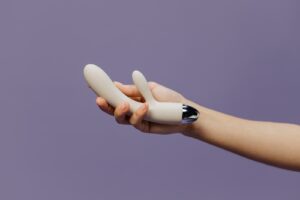Men’s penises vary in size and shape. Some are longer and thicker than others, while the shaft may have a more pronounced curve.
Penetration should be approached with open communication and mutual consent. With lubrication, it’s possible to find the right position and location for penetration that provides pleasure for both partners.
The Vaginal Opening
For a woman, the vagina is where her baby exits during birth, where period blood flows during menstruation and where a penis, finger, sex toy or tampon can be inserted. A thin membrane called a hymen usually surrounds this hole. This may be stretched during sex or exercise and can be pierced during oral or anal sex.
Women have three essential holes ‘down there’, including the vaginal opening, the urethral opening and the anus. The urethral opening is at the top of the vulva, the anus at the bottom and the vaginal opening in between. The clitoris and the labia minora and majora are also part of the vulva.
When sexually aroused, a woman’s corpora cavernosa (the sponge-like tissue that makes up the head and shaft of her clitoris) swells. This stretches the gap between her anus and the vaginal opening, making it easier for the penis to enter.
This is why foreplay is important and can help determine how a woman feels when a man inserts his penis into her vagina. Foreplay can include kissing, cuddling and other activities to sexually arouse both partners and prepare the body for penetration. However, one should remember that not all foreplay leads to sex. It is also important to use plenty of lubricant to ensure an enjoyable experience for both partners.
The Urethra
The urethra is a muscular tube that conveys urine from the bladder to outside the body. It also functions as the duct for the release of sperm during sexual activity. In males, the urethra runs from the bladder through the prostate and into the penis. In females, the urethra is shorter and opens in front of the vagina.
The male urethra is divided into three sections: the prostatic urethra, which is inside the prostate; the membranous urethra, which is short and penetrates the pelvic floor; and the spongy urethra, which is long and opens at the tip of the glans penis. Histologically, the prostatic urethra is lined by urothelium; the membranous and spongy urethras are lined by smooth muscle cells; and the spongy urethra has glandular tissue called the corpus spongiosum.
The female urethra is much shorter and more difficult to describe. It begins in the bladder and then enters the pelvic area through the deep perineal pouch and is surrounded by the external urethral sphincter. The urethra then enters the vagina and is surrounded by the labia minora and the vulva. Arterial blood flow to the urethra is provided by branches of the internal pudendal artery and venous drainage is supplied by the vaginal veins. Two mucous glands called Skene glands can be found at the end of the urethra and they secrete lubricants during sexual activity.
The Cervix
The vagina stops at a button-shaped entrance to the uterus (womb). During penetrative sex, the penis can either touch or bump up against the cervix. It’s also possible to stimulate the cervix with a finger, dildo or other sex toy.
The cervix is very tight and closed with thick mucus most of the time. It only opens to let sperm in and menstrual blood out. The cervix protects the uterus from harmful bacteria and viruses and produces its own lubrication. It’s important to get regular pelvic exams and pap tests, too.
When a woman is sexually aroused, the corpora cavernosa of the clitoris and the cervix enlarge and stiffen. This makes it easier for the penis to enter. The squeezing of the clitoris and cervix stimulates nerve pathways that produce sensations associated with arousal, including orgasm.
It’s common for the cervix to change position over the course of a menstrual cycle. If you’re curious, try feeling your cervix with your fingers at different times of the month. It may feel soft (like an ear lobe) and open near ovulation, for example, but firmer (like the tip of your nose) or higher up in your abdomen, before or during your period. You can download an app like Clue to track your menstrual cycle and ovulation to help figure out when the cervix might be more easily reached.
The Anus
The anus is a button-shaped hole in the back of the pelvis. It contains two circular-shaped muscles that control its functioning: the internal and external anal sphincters. During sexual arousal, these muscles tighten, which makes the anus smaller and prepares it to receive sperm during penetration. The anus also contains a set of small glands that secrete mucus.
The walls of the anus are not as well lubricated as those of the vagina, so a person should use saliva or a lubricant to prevent irritation and injury. The anus is susceptible to a variety of infections, including yeast infection (Candidiasis), anal abscesses and fistulas, bacterial overgrowth (P. mirabilis) and sexually transmitted infections (STIs) like chlamydia, genital herpes, human papillomavirus (anal warts), gonorrhea, syphilis and HIV.
What anal sex feels like is highly personal and varies between individuals, but some people describe it as tingly, shivery, hot or electricity running through the body. A healthy anus requires regular cleaning, daily lubrication, adequate hydration and regular bowel movements. Practicing safe sex by using protection and screening for STIs is the best way to prevent sexually transmitted disease in the anal area.
See Also:





